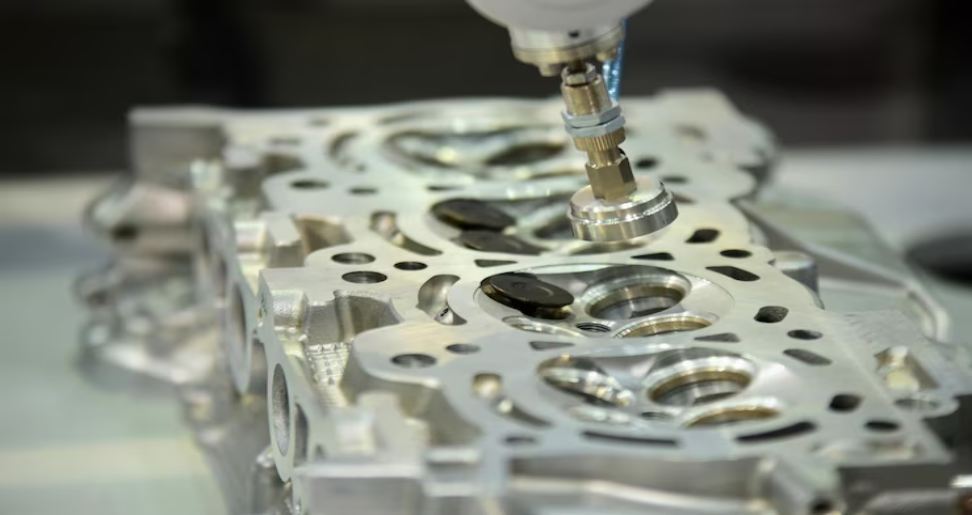Overmolding, the process of fusing multiple materials within a single mold, has revolutionized product design and manufacturing. China, a powerhouse in the mold-making industry, has become a leader in overmolding technology, offering cost-effective solutions and pushing the boundaries of design possibilities.
Let’s embark on a journey through the fascinating world of overmolding in China, exploring the design considerations, production process, and the nation’s significant contributions to this transformative technology.
The Design Phase: Conceptualizing the Overmolded Product
The journey of an overmolded product begins with a well-defined design.
Here’s what designers and engineers need to consider:
Material Selection: Choosing the right materials for both the core (typically rigid plastic) and the overmolded layer (can be plastic, rubber, or even metal) is crucial. Factors to consider include functionality, aesthetics, compatibility, and cost.
Part Geometry: Overmolding allows for complex geometries, but designing for manufacturability is essential. Draft angles, undercuts, and wall thickness variations must be carefully considered to ensure proper material flow and part removal from the mold.
Functional Integration: Overmolding can combine materials with different properties in a single part. For example, a soft-touch overmold on a handle can improve grip, while a conductive overmold can create integrated electrical components.
Aesthetics and User Experience: Over mold process offers design freedom for creating visually appealing products with improved texture, color combinations, and surface finishes.
China’s Role in Overmolding Design:
Material Expertise: China mold makers have extensive knowledge of various materials suitable for overmolding. They can collaborate with designers to select the optimal materials for specific applications.
Cost-Effective Design: With their focus on cost-efficiency, Chinese manufacturers can suggest design alternatives that optimize material usage and minimize waste, reducing overall production costs.
Design for Manufacturability (DFM): Chinese mold makers possess a deep understanding of their production capabilities and can guide designers in creating parts that are feasible to overmold efficiently.
The Production Process: Bringing the Design to Life
Once the design is finalized, the overmolding production process in China typically involves these key steps:
Mold Design and Manufacturing: Experienced engineers design the mold, considering factors such as gating systems, parting lines, and cooling channels. China boasts a skilled workforce adept at utilizing techniques like HSM and EDM for precise mold creation.
Material Preparation: The chosen materials for the core and overmold layer are prepared and pre-treated as needed. This may involve drying, degassing, or coloring the materials.
Overmolding Process: The core and overmold materials are loaded into the mold. The core is typically injection molded first, followed by the overmold material. Precise control of temperature, pressure, and cycle times ensures proper bonding between the materials.
Part Removal and Finishing: Once cooled, the overmolded part is removed from the mold. Depending on the design, minimal or no secondary finishing may be required due to the use of laser texturing for surface features.
Quality Control: Rigorous quality control checks are performed throughout the process to ensure dimensional accuracy, surface quality, and functional performance of the overmolded part.
China’s Advantages in Overmolding Production:
Cost-Effectiveness: China offers competitive pricing for overmolding projects, making it accessible to a wider range of manufacturers, particularly for high-volume production runs.
Technical Expertise: Chinese mold makers have honed their skills in overmolding techniques, including multi-shot molding and insert molding. This expertise allows them to handle complex projects with tight tolerances.
High-Volume Production: Chinese manufacturers excel at high-volume production runs, catering to the demands of global industries with efficient production processes.
Automation Integration: The increasing integration of automation and robotics in Chinese mold making enhances production efficiency, consistency, and reduces human error.
Beyond Established Techniques: Innovation in Chinese Overmolding
China actively pushes the boundaries of overmolding technology through various innovations:
3D Printing for Mold Making: Additive manufacturing technologies are increasingly used for creating complex mold cores and cavities, reducing reliance on traditional machining and facilitating faster design iterations.
Smart Molding Technologies: Integrating sensors and communication technology into molds allows for real-time monitoring of process parameters, enabling process optimization, predictive maintenance, and improved quality control.
Sustainable Overmolding Practices: Chinese mold makers are focusing on eco-friendly solutions, including using recycled materials for mold bases, exploring bio-based materials for overmolding, and optimizing energy
In Conclusion:
China’s continued commitment to innovation and collaboration will solidify its position as a leader in overmolding technology. This, in turn, will fuel advancements in various industries, leading to the development of next-generation products with superior functionalities, improved aesthetics, and a focus on sustainability. The future of overmolding is undoubtedly bright, and China is well-positioned to be at the forefront, shaping the way products are designed and manufactured in the years to come.
Read more:
- Sorrento Mobile Home Park
- Top 10 Best Glass Coffee Table For Your Home
- What Are The Disadvantages Of Seller Paying Closing Costs?

